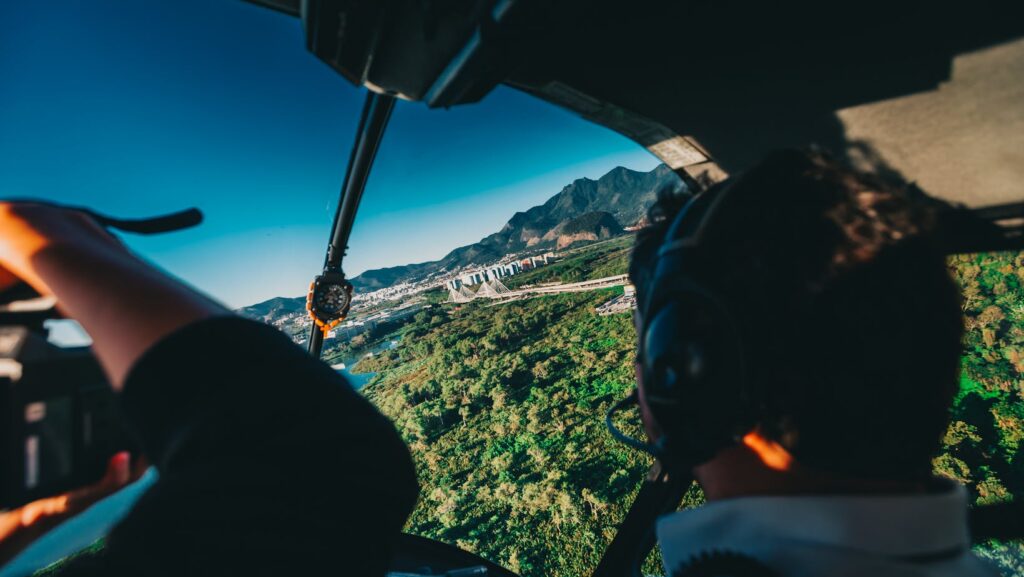Imagine soaring above congested city streets, bypassing traffic jams, and reaching your destination in a fraction of the time. Welcome to the future of urban air mobility vehicles! This isn’t science fiction, it’s the dawn of a new era in transportation.
Urban Air Mobility Vehicles
Building on the evolution of city travel, this section takes a deep dive into urban air mobility vehicles, pointing out their definition, structure, and design features.

Urban Air Mobility vehicles is a transport innovation, signifying the employment of electric vertical take-off and landing vehicles (eVTOLs) for intra-urban transportation. Think of it as on-demand commuting in the sky, mirroring the convenience of ride-hailing services on the ground, but getting rid of the road altogether.
As for their design, Urban Air Mobility vehicles generally utilize electric power, taking advantage of vertical take-off and landing (VTOL) technology. Their design metaphorically resembles large-scale drones, often featuring clusters of small propellers to enable both vertical lifts and forward propulsion. A quintessential example of such a vehicle is the Ehang 216, an eVTOL vehicle designed by Ehang, a company based in China.
The Pros and Cons of Urban Air Mobility Vehicles
The Advantages of UAM
UAMs offer numerous attractive benefits. First, they increase the efficiency of transportation in urban areas. By using the airspace, UAMs bypass ground-level traffic congestion, promising faster travel times. For instance, a UAM flight from JFK Airport to Manhattan, a commute that often takes an hour by car, can be reduced to mere minutes.

Next, UAMs promote sustainability. Predominantly powered by electricity, these vehicles contribute to the reduction of carbon emissions, providing an eco-friendly alternative to traditional petrol-powered vehicles. The Ehang 216, for instance, operates entirely on electricity, showcasing the potential of UAMs in fostering a green revolution in the transportation sector.
Additionally, UAMs may open up new economic opportunities. The creation of skyports, the infrastructure necessary for UAM take-off and landing, could stimulate local economies by generating jobs and demand for auxiliary services.
The Challenges Faced by UAM
However, UAMs also pose several significant challenges that need to be addressed. Firstly, there’s the issue of safety and reliability. Operating with precision in dense urban spaces without endangering people or property requires advanced technology, including superior navigation systems and failsafe mechanisms.
Secondly, is the challenge of noise pollution. While electrically powered, these vehicles still generate noise. Companies must design UAMs that balance efficiency, performance, and acceptable noise levels to ensure they won’t contribute to urban noise pollution.
Moreover, the widespread adoption of UAMs will necessitate a massive overhaul of aviation regulations and air traffic management systems. Governments, regulatory bodies, and stakeholders must work in unison to create suitable legal frameworks and infrastructure that can accommodate the novelty of UAM transport.
The Safety Measures in Urban Air Mobility Vehicles
The Integration of Autonomous Flight Systems
Autonomous flight systems play a pivotal role mitigating flight risks in UAMs. These systems incorporate innovative technology, including sensors, radars, and cameras, designed to detect and avoid obstructions. For instance, Ehang 216, an autonomous aerial vehicle, employs a smart control system allowing for a smooth and secure flight. Notably, these systems reduce the need for manual steering, thus minimizing human error.
Crash Safety and Emergency Procedures in UAM

Urban Air Mobility Vehicles are embedded with robust safety measures for possible crash scenarios. Advanced technology allows for a rapid shift into a safe mode to prevent accidents. Furthermore, emergency measures such as parachute systems and energy-absorbing deformable structures are used to provide a secure landing and minimize the impact. Lastly, UAMs, like the Ehang 216, have been tested vigorously under extreme conditions to validate emergency procedures, demonstrating that passenger safety ranks high in the hierarchy of UAM design requirements.
Transforming Transportation
Urban air mobility vehicles, such as the Ehang 216, are proving to be game-changers in the transportation landscape. They’re not just a solution to urban congestion, they’re also a step towards sustainable and efficient transportation. However, they’re not without their challenges. Safety, noise pollution, and public acceptance are significant hurdles that need to be overcome.

